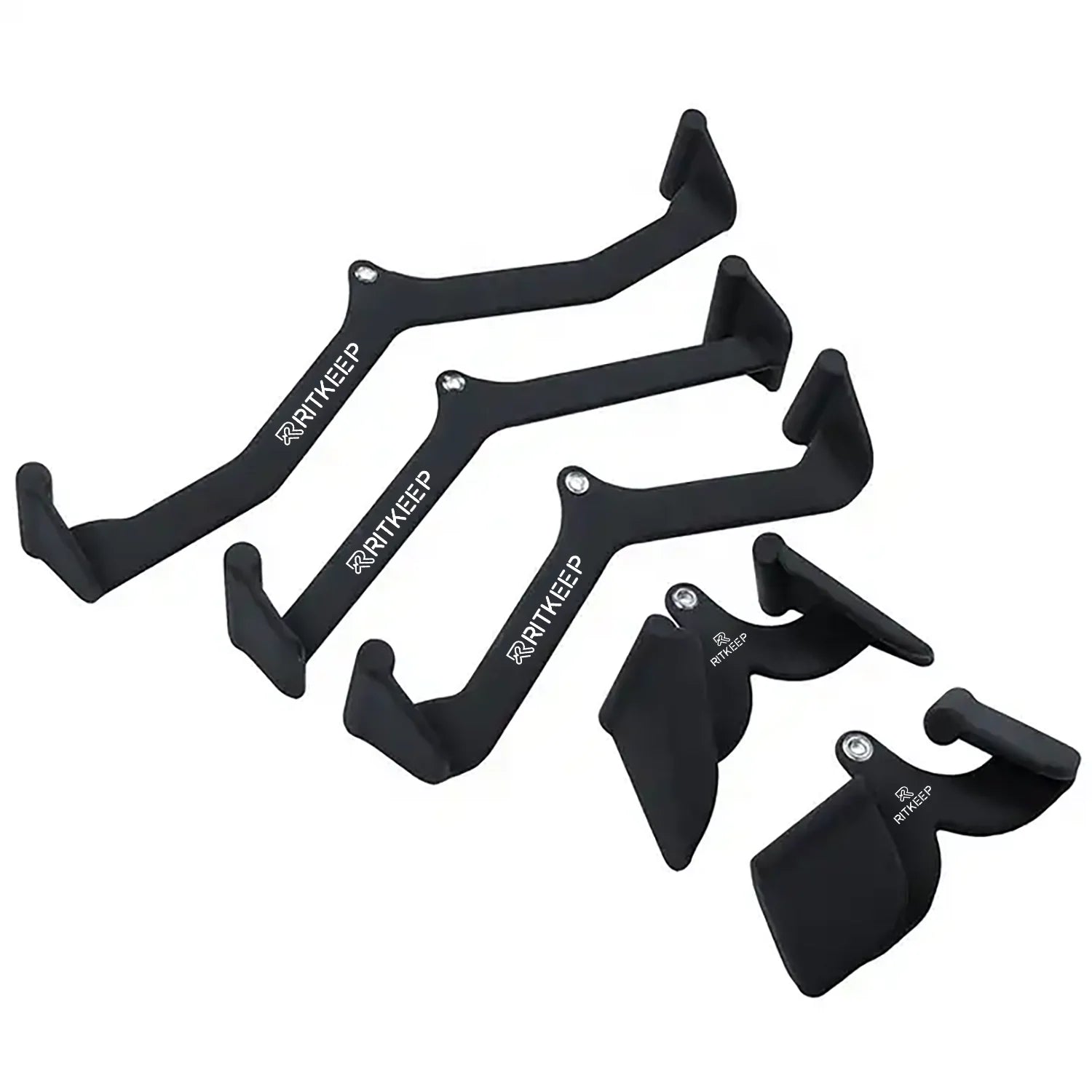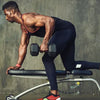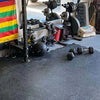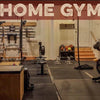Train Smarter at Home: How the PMAX Smith Machine Builds Total-Body Strength
Looking to build strength, boost endurance, and take your training to the next level—all from the comfort of your home? Smith machines offer a powerful and safe way to train with controlled resistance, with all-in-one systems like the PMAX5600 and PMAX‑4750 Smith Machine, you're getting far more than just a barbell on rails—you're getting a complete training platform.
In this guide, we'll show you how to unlock the full potential of Smith machine training, using Smith Machine to build total-body strength, functional power, and muscular endurance—all from the comfort of home.
Table of Contents
- What is Smith Machine
- Six Key Benefits of Smith Machine Training
- Common Types of Smith Machine Training
- Muscles Targeted by Smith Machine Training
- Worksheet Variations & Training Focus Areas
- Safety & Technique Tips
- PMAX-4750 vs PMAX-5600: Which One Matches Your Training Style?
- Final Summary: Strength, Versatility, and Safety in One Machine
What is Smith Machine
At its core, a Smith machine is a piece of gym equipment designed to guide a weighted barbell along fixed vertical or slightly angled rails. Sounds straightforward, but this design offers a unique combination of safety, stability, and versatility that makes it a staple in both home and commercial gyms, it's perfect for solo lifters who want to go heavy without the risk.
The Smith machine started as a simple innovation for controlled lifting and injury prevention. But today, it's evolved into an all-in-one powerhouse—especially in modern designs like RitKeep's PMAX‑5600 and PMAX‑4750 Smith Machine. These machines go far beyond a bar on rails—they combine multi-grip pull-up bars, functional cable systems, weight stacks, and a full array of attachments to give you hundreds of training options in a single footprint.
Whether you're training for size, strength, or total-body fitness, Smith Machine turn your home gym into a complete strength station—offering all the support and variety you need to push harder, train smarter, and stay consistent.
Keep reading to learn how to get the most out of Smith machine training with these all-in-one systems.
Six Key Benefits of Smith Machine Training
Whether you're setting up your first home gym or upgrading your current strength setup, the Smith machine stands out as one of the most versatile and effective tools available. Designed to support guided, controlled movements, it offers a unique combination of safety, stability, and strength-building potential that's hard to match. From beginners to advanced athletes, users of all levels can benefit from this powerhouse equipment.
Here are six key reasons why the Smith machine deserves a central place in your training routine:
1. Builds Strength & Power Safely
The Smith machine offers a stable, guided bar path, making it ideal for foundational compound lifts like squats, bench presses, and shoulder presses. This stability reduces the risk of injury, especially under heavy loads, allowing lifters to push their limits in strength and power with greater confidence.
2. Enhances Cardiovascular Endurance
Smith machines aren't just for brute strength—they can be powerful tools in metabolic conditioning. By combining high-rep supersets with the cable system or alternating between Smith bar exercises ,like squats or presses and pulley work, users can create fast-paced circuits that elevate heart rate, improve cardiovascular health, and burn fat efficiently.
3. Excellent for Muscle Development
From targeting the quads and glutes with lunges and squats, to building chest, shoulders, and arms through presses and curls, Smith machines offer precise control and constant resistance. This makes them ideal for muscle grow training, especially when paired with adjustable attachments and isolation movements.
4. Supports Functional Strength Training
Some Smith machines include landmine attachments and dual cables, enabling rotational movements, unilateral exercises, and horizontal pulls. This enhances real-world strength and body coordination, translating well to sports, daily movement, and injury prevention.
5. Enables Low-Impact Progressive Overload
The controlled motion of the Smith machine reduces joint strain and instability—like PMAX5600—making it perfect for beginners, older adults, or those recovering from injuries. With adjustable resistance and a safer lifting path, users can progressively increase load and volume over time without overtaxing the body.
6. Provides Unparalleled Safety
One of the biggest advantages of Smith machines is safety—especially when training alone at home. Built-in locking points along the guide rails allow users to "rack" the bar at any moment during a lift. This means you can train with intensity and confidence, even without a spotter.
Common Type of Smith Machine Training
Smith machines support a variety of workout styles, but generally focus on four key areas:
- Strength Training: Classic compound lifts such as squats, bench press, shoulder press, and deadlifts can be performed with added stability, making it ideal for building raw strength.
- Muscle Building: Focus on controlled reps and muscle isolation with exercises like split squats, incline presses, and Smith bar curls to maximize muscle growth.
- Functional & Conditioning Work: Paired with landmine attachments or cables, the Smith machine supports rotational movements, unilateral work, and stability-based training that mimics real-life movement.
- Rehabilitation & Low-Impact Training: With its fixed path and safety features, the Smith machine is a great tool for rehabbing injuries or offering lower-impact strength training for older adults.
Muscle Targeted by Smith Machine Training
Smith machine exercises effectively engage multiple major muscle groups, making it a versatile tool for total-body development. Common muscles targeted include:
Upper Body
1. Chest:
Exercises: Smith machine bench press, incline press.
Muscles Worked: Pectoralis major and minor — building upper-body pushing strength and muscle size.
2. Shoulders:
Exercises: Overhead press, shrugs.
Muscles Worked: Deltoids and trapezius — improving shoulder strength and stability.
3. Back:
Exercises: Bent-over rows with Smith bar, pulldowns and face pulls using cable attachments.
Muscles Worked: Latissimus dorsi, rhomboids, and rear deltoids — essential for posture and upper pulling strength.
4. Arms:
Exercises: Bicep curls and triceps extensions using cables or Smith bar.
Muscles Worked: Biceps brachii and triceps brachii — targeting arm muscle tone and strength.
Core
1. Abdominals and Obliques:
Exercises: Stabilization during squats and lunges, cable rotations and woodchoppers with attachments.
Muscles Worked: Rectus abdominis, obliques — critical for balance and core stability.
2. Lower Back:
Exercises: Deadlifts, bent-over rows, and controlled cable movements.
Muscles Worked: Erector spinae — supports spinal health and posture during lifts.
Lower Body:
1. Quadriceps:
Exercises: Smith machine squats, lunges, step-ups.
Muscles Worked: Vastus lateralis, vastus medialis, rectus femoris — powering knee extension and leg drive.
2. Hamstrings:
Exercises: Romanian deadlifts, lunges.
Muscles Worked: Biceps femoris, semitendinosus, semimembranosus — important for hip extension and knee flexion.
3. Glutes:
Exercises: Squats, hip thrusts, lunges.
Muscles Worked: Gluteus maximus, medius, and minimus — key muscles for hip power and athletic movement.
4. Calves:
Exercises: Weighted calf raises with Smith bar.
Muscles Worked: Gastrocnemius and soleus — essential for ankle stability and push-off strength.
Worksheets Variations & Training Focus Areas
While nearly any Smith machine exercise can help improve your fitness, tailoring your workouts to your specific goals will help you get the most out of each movement:
- Smith Squat & Lunges: Target the quads, glutes, and hamstrings — perfect for building lower-body strength and stability.
- Smith Bench & Incline Press: Focus on the chest, shoulders, and triceps, ideal for developing upper-body pushing power.
- Smith Bar Rows & Shrugs: Hit the back and traps, great for improving posture and pulling strength.
- Assisted Pull-ups & Lat Pulldowns: Activate the lats and biceps, ideal for upper-body definition.
The best part? Smith machine workouts are highly customizable. Whether you're aiming to build muscle, increase endurance, or improve functional strength, this equipment supports full-body progress — safely and efficiently.
Safety & Technique Tips
Using a Smith machine offers both safety and performance benefits — but proper technique makes all the difference. Here are key tips to keep your workouts effective and injury-free:
- Focus on Form First: Start with lighter weights to master your technique before progressing to heavier loads.
- Use the Safety Arms: Both the PMAX-5600 and PMAX-4750 come with adjustable safety catches — set them to prevent the bar from dropping too low.
- Keep Movements Controlled: Avoid using momentum. Smooth, controlled reps engage muscles better and protect your joints.
- Align Your Body Properly: Make sure your feet, hips, and shoulders are positioned correctly to mimic natural movement patterns.
PMAX-4750 vs PMAX-5600: Which One Matches Your Training Style?
When choosing a Smith machine, your training goals make all the difference. Here's how the PMAX-4750 and PMAX-5600 meet different user needs:
PMAX 5600—For Functional Training, Rehab & Controlled Weight Workouts
With dual adjustable pulleys and integrated weight stacks (2 × 110 lbs), the PMAX-5600 is ideal for more controlled, isolated movements.
- Smooth cable movements and balanced resistance.
- Great for rehabilitation, beginners, or users focusing on form and functional strength.
- Easier resistance adjustments for full-body training without heavy loading.
PMAX-4750 – For Heavy Lifters Who Push Limits
Built for serious strength training, the PMAX-4750 is ideal for users focused on heavy barbell lifts like squats, presses, and rows.
- Plate-loaded system supports heavier loads.
- Perfect for powerlifters or advanced lifters looking to train at high intensity.
- No built-in weight stacks – you load your own plates for maximum resistance control.
To sum up, Go with the PMAX-4750 if you're pushing for maximum strength and love heavy lifting. Choose the PMAX-5600 if your priority is controlled, versatile training — ideal for recovery, toning, or functional movement work.
Final Summary: Strength, Versatility, and Safety in One Machine
The Smith machine is your no-nonsense training partner — no gimmicks, just reliable, full-body strength training that delivers results. Whether you're chasing heavy lifts, improved stability, or safe, guided movements, Smith machine training helps you stay consistent, focused, and strong.
Not sure where to begin? Explore RitKeep's top-rated models and find the right fit for your goals. Go heavy and push your limits with the PMAX-4750, or keep it smooth and steady with the PMAX-5600. No matter your path, you're covered with top-tier build quality, smart design, and the versatility to evolve with your fitness journey.
So load up, lock in, and let the Smith machine take your training to the next level.
What Is a Barbell Hip Thrust?
A barbell hip thrust is a lower-body strength training exercise defined by lifting your lower back and torso with your knees bent and your upper body resting on a bench. With proper form, the barbell hip thrust works muscle groups across your entire lower body, particularly the gluteal muscles.
Targeting and engaging the gluteal muscles more than other lower body exercises due to its horizontal movement, thus helping build and strengthen your glutes. It also enhances mobility of the hip joint, which plays a role in several movements in sports and in daily activities. Through enhancing power and explosiveness, hip thrusts are useful in improving athletic performance, particularly in sprinting speed, jumping height, and overall lower body strength. Additionally, they assist in minimizing risk of injury in the lower back and knees through enhancing the muscles that support these two body parts. This is why they play a significant role in performance and safety.
- Also Known As: Hip thruster, weighted hip bridge, weighted glute bridge
- Targets: Gluteus minimus, gluteus medius, gluteus maximus, hamstrings, adductors, and quadriceps
- Equipment Needed: Barbell, weight plates, dumbbell, or kettlebell
- Level: Intermediate
Guide to Performing Hip Thrusts
The most widely practiced version of the hip thrust requires you to maintain your balance on a weight bench while holding a barbell on your hips. Getting into and out of the position may be awkward when you are new to the exercise. It may be helpful to work with a partner or a coach when you first try this move. You can also try the move on the floor before using a weight bench. If you use the weight bench from the beginning, practice the movement with no weight before adding resistance.
For safety, be careful to set up your weight bench properly when you do the hip thrust workout, especially if you plan to lift a lot of weight. Make sure that the bench you use is no higher than your knees. The long end of the bench should be positioned against a solid surface like a wall so that it cannot move while you are lifting.
Also, you may want to use a pad or sponge on the bar. Position the pad on the center of the bar so that both hip bones are protected. Some exercisers use a towel, but a towel can slip and is less secure.
If there is no bench available and your gym doesn't have a thruster, you can use an exercise step with 4 or 5 risers. After the bench is set up, you'll want to load the bar with weight. Always secure weight plates with a barbell collar.
How to Do Hip Thrusts
- Start seated on the floor, knees bent, feet slightly wider than hip-distance apart. The toes can be turned out just slightly. The upper back (lower scapula) should be resting against the edge of the weight bench in the center of the bench.
- Place the weight bar across the hips. Hold onto the bar to keep it in place, but do not use your arms to lift it.
- Squeeze the glutes and press the bar straight up until the hips are in line with the shoulders and knees. The bench should be supporting the mid-scapula area. Keep the core tight and maintain a slight chin tuck with your focus down your body (a few inches above the bar).
- Slowly lower the bar down until the hips are just a few inches off the floor.
- Squeeze the glutes and lift again.
Common Hip Thrust Mistakes
There are a few common blunders to avoid when performing the hip thruster. Mistakes could lead to a less effective outcome and potentially to neck or back problems.
Incorrect Foot Placement
Many coaches tell their clients that they can find a foot position that feels most comfortable for them. However, the placement of your feet can affect how active different muscles are during the thruster. Moving the feet wider or more narrow is not likely to make a big difference, but moving the feet further away or closer to the body may change how this exercise feels.
If you feel like your quadriceps muscles (the front of the thigh) are working too hard, your feet may be too close to your hips. Moving them further away from the body will help to shift the workload to the hamstrings and glutes. Moving them too far away will minimize the glutes and emphasize the hamstrings.
Lazy Neck
Your focus is important while performing the hip thrust exercise. The upper back is supported by the weight bench, but the neck and head are not. So it is possible to drop the head back and look at the ceiling while lifting the hips. But this can encourage overarching through the spine, so it is not recommended.
Instead, keep the chin tucked down towards the chest while lifting the hips into extension. This helps to keep the core engaged and prevents you from arching the torso and overextending through the spine.
Incomplete Extension
If you are lifting too much weight, or if you have very tight hip flexors, it is possible to lift the hips partially but not to reach full extension with the hips in line with the shoulders and knees. This will shortchange you of the most effective part of this exercise.
To reach full extension, lower the amount of weight slightly and see if you can get the hips fully extended. If the hips still aren't getting high enough, your hip flexors may be too tight. Try doing bridge exercise on the floor to open up the hip area before doing the thruster.
Lowering Too Quickly
Both the concentric (lifting) phase and the eccentric (lowering) phase are important during the hip thruster exercise. Some people put substantial effort into the lifting segment and move quickly through the lowering phase to start another repetition.
But to make the most of this fitness thrust, you want to control the eccentric phase. Take as much time lowering the bar as you do lifting it. It will force the glutes to stay engaged and work harder.
Hip Thrust Muscles Worked
Primary Muscles Targeted by Hip Thrusts
The primary muscles worked by hip thrusts include the gluteus maximus, hamstrings, and quadriceps. These muscles play crucial roles in hip extension, stability, and overall lower body strength.
Gluteus Maximus
The gluteus maximus is the largest and most powerful muscle in the gluteal group. It is the primary mover in hip thrusts, responsible for hip extension and playing a critical role in generating power and strength in the lower body. Strengthening the gluteus maximus can enhance athletic performance and improve overall lower body strength.
Hamstrings
The hamstrings assist in hip extension and provide stability during the hip thrust movement. These muscles are essential for maintaining proper form and preventing injury. Strong hamstrings contribute to better lower body strength and performance in various activities.
Quadriceps
The quadriceps support the upward thrust and help stabilize the knee joint during hip thrusts. This muscle group is crucial for maintaining proper form and preventing strain on the knees. Strengthening the quadriceps can enhance lower body strength and stability.
Secondary Muscles Worked by Hip Thrusts
In addition to the primary muscles, hip thrusts also engage several secondary muscles that play supporting roles in the movement.
Adductors
The adductors help stabilize the hips and assist in the upward motion of the hip thrust. These muscles contribute to better hip stability and overall lower body strength.
Core Muscles
Engaging the core muscles during hip thrusts helps maintain stability and support the lower back. A strong core is essential for performing the exercise correctly and avoiding injury.
Hip Flexors
The hip flexors play a supporting role in the movement, helping to control the descent and ascent of the hips. Strong hip flexors contribute to better hip mobility and overall lower body strength.
By understanding the muscles worked by hip thrusts, you can optimize your workout routine to target these muscle groups effectively, promoting greater gains in strength and development.
Core Benefits of Hip Thrust
1. Enhances Athletic Performance
Weighted hip thrust is an effective lower body exercise since they enhance the horizontal force production that is vital for athletic performance particularly in regard to activities such as running and jumping. This exercise increases the power and speed of hip extension, which may lead to improved performance in sports and other exercises involving explosive movements. Also, enhanced glute strength and stability resulting from hip thrusts enhance overall body function and aids in injury prevention.
2. Improves Posture
Hip thrusts also help to enhance posture since it involves the strengthening of muscles that form the foundation of the pelvis and the lower back. This means easier pain prevention and fewer cases of chronic pain and spinal misalignment that are associated with prolonged sitting and poor body mechanics.
3. Easier Daily Activities
Due to the strengthening of the glutes and hamstrings, thrusting can help you perform simple tasks better. You'll be able to walk without as much difficulty, get upstairs, and lift easier. This exercise enables the body to improve its mobility, thus making daily living activities easier.
4. Increased Bone Density
They're also a form of resistance exercise which means that they assist in building the strength of your bones. This is because they help in avoiding diseases that weaken the bones such as osteoporosis. Better bones imply that if you fall, your bones will not easily get fractured.
5. Pelvic Health and Mobility Improvements
Hip thrusts also have an important role in enhancing pelvic stability and movement, which is useful in activities such as running and jumping. Improved pelvic stability means better movement efficiency and reduces risk of injury.
6. Strength and Stability Improvements
Hip thrusts effectively strengthen the lower body and core muscles, thus making you more balanced. This enhanced strength assists in many functions in our daily life, be it in sports or any other activity. Muscles that are stronger can help your body inwards prevent many injuries from occurring and enhance your health in general.
Hip Thrust Techniques for Beginners
For those still learning how to do hip thrusts, you can start doing machine-assisted hip thrusts so that you'll be able to perform it with proper form. Hip thrust machines are great for newbies as they offer a stable environment in case balancing weights on your hips causes you to struggle with balance and stability.
- Safety: Hip thrust machines guide movements, reducing the risk of improper form and injury, making them ideal for beginners.
- Ease of Use: Adjustable resistance allows beginners to start with lighter weights and gradually increase as they gain confidence and strength.
- Gradual Progression: Controlled resistance helps build strength steadily. As you progress, you can increase the resistance to continually challenge your muscles and promote growth.
Advanced Techniques to Enhance Muscle Activation
Once you've mastered the basics of hip thrusts, incorporating advanced techniques can help you further enhance muscle activation and achieve greater results. These techniques involve using different types of resistance, varying your foot placement, and implementing progressive overload strategies.
- Using Different Weights: Use dumbbells, barbells, or the smith machine to vary angles and intensities for comprehensive muscle development.
- Progressive Overload: Gradually increase weight or resistance to continuously challenge your muscles, essential for growth and strength.
- Foot Placement Variations: Adjust foot placement to target different muscles. Wider feet target adductors and gluteus medius; closer feet focus on quadriceps and hamstrings.
To incorporate these advanced techniques into your hip thrust routine, start by gradually increasing the weight or resistance and experimenting with different foot placements. Ensure that you maintain proper form and technique to avoid injury and maximize muscle activation.
By implementing these advanced techniques, you can take your hip thrust workouts to the next level, promoting greater muscle activation and achieving more significant gains in strength and development.
Conclusion
The barbell hip thrust is a powerhouse movement for anyone looking to develop strong, shapely glutes and build a more explosive, injury-resistant lower body. Whether you're a beginner starting with a hip thrust machine or an advanced lifter adding serious weight to a barbell, this exercise delivers incredible glute activation, supports hip health, and improves overall posture and performance.
Ready to take your lower body to the next level? Make the barbell hip thrust a regular part of your training plan and experience the true benefits of a well-rounded, science-backed glute workout.
Best Home Gym Gear in RitKeep
These are our most popular home gym machines — combining Smith Machine and Power Rack in one. Perfect for both guided and free weight training to support your everyday fitness goals.
PMAX 5600 All-In-One Smith Machine - Integrated Weight System
✔️ 6 IN 1 Gym Station
✔️ With 75 KG Weight Stack On Each Side
✔️ Feel the Burn Through 80+ Exercises
PMAX 4750 Dual Plate Loaded Multi Functional Smith Machine
✔️ Fuel Your Workout with 100+ Exercises
✔️ Dual Independent Pulley System
✔️ Removable Jammer Arms & Leg Extension
Destroyer M10 ALL-IN-ONE Home Gym Power Rack With Pulley System
✔️ Crossover Cable Pulley System
✔️ Heavy-Duty Multi-Functional Rack
✔️ Offering over 80+ exercises













